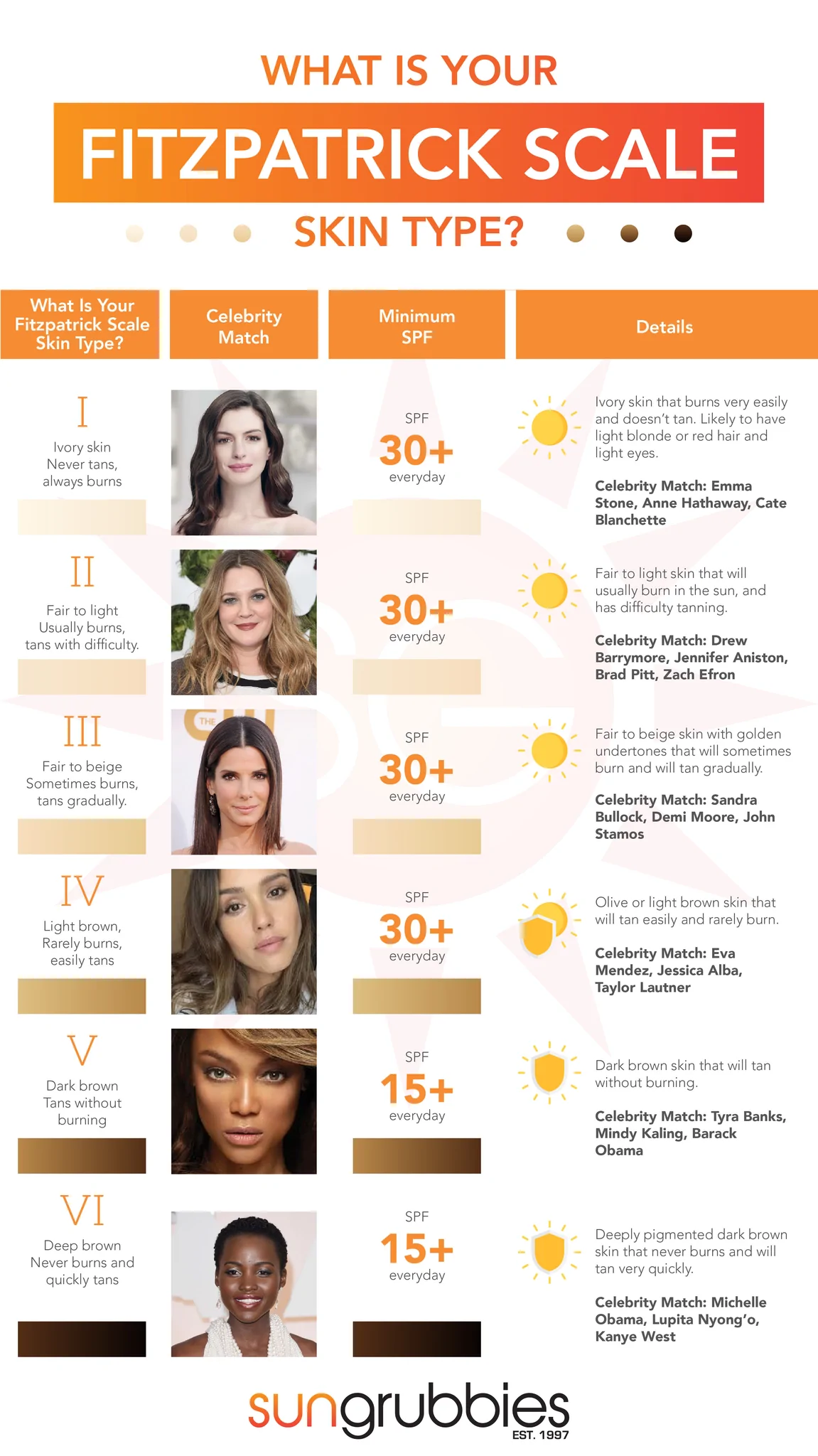As a skincare professional, analyzing the client’s skin is an essential component of your job. At the start of every treatment, the skin analysis gives you a close-up look at the client’s skin to identify issues, but it also provides an opportunity to determine the client’s skin type. This knowledge enables you to make informed decisions about what products to use during the treatment and, equally important, what at-home products to recommend afterward.
When it comes to skin type, most clients have some idea whether their skin is normal, oily, dry, or a combination. What they may not know, however, is that there’s another skin type that might be useful to identify – their skin phototype. This is measured using the Fitzpatrick scale.
While the treatment itself is the primary driver for results, a good esthetician sends the client off with the knowledge and products they need to maintain those results at home. Here’s what you need to know about the Fitzpatrick scale so you can utilize it in treatments and in client education.
What Is the Fitzpatrick Scale?
Developed in 1975 by Thomas Fitzpatrick, a Harvard Medical School dermatologist, the Fitzpatrick scale is used to classify skin complexions in relation to their risk of burning or tanning with ultraviolet (UV) ray exposure. It was originally used as a method of determining the proper dose of UVA for Psoralen and UVA (PUVA) light therapy. PUVA therapy is a form of UV therapy used to treat various skin diseases like eczema, vitiligo, and cutaneous T-cell lymphoma in combination with a sensitizing drug called psoralen.
Today, estheticians use the Fitzpatrick scale to predict how a client’s skin will respond to facial treatments. It can also be used by medical professionals to assess a patient’s risk for sunburn and cancer.
The modern Fitzpatrick scale divides skin types into six categories:
- Type I (scores 0-6) – Always burns, never tans; generally pale with freckles.
- Type II (scores 7-13) – Usually burns, tans minimally; light skin but darker than fair.
- Type III (scores 14-20) – Burns sometimes, tans uniformly; golden honey to olive color.
- Type IV (scores 21-27) – Burns occasionally, always tans; moderate brown color.
- Type V (scores 28-34) – Burns rarely, tans very easily; dark brown color.
- Type VI (scores 35-36) – Never burns; deeply pigmented dark brown.

Though the Fitzpatrick scale is widely used, there are some limitations. The original scale did not include classifications for darker skin tones – it only ranged from Type I to Type IV. While the scale has been expanded to be more inclusive, it still doesn’t account for much variance in skin tone among people of color or mixed race.
Why Does Skin Phototype Matter?
The Fitzpatrick scale is limited to six different skin types and some clients may not meet all the characteristics of a single type. In this case, go with the one that fits best.
Determining the client’s skin phototype gives you a reference point for what the skin can handle. It comes in handy when choosing more intensive skin treatments like chemical peels or when assessing the client’s suitability for UV and laser treatments. Clients with darker skin tones may have a higher risk for post-inflammatory hyperpigmentation following certain treatments, so it’s important to be aware of the risk and choose products wisely.
Understanding the Fitzpatrick scale and being able to classify your clients’ skin also plays a key role when it comes to educating the client about their skin and making skincare recommendations.
Tips for Educating Your Clients
When educating your clients about their Fitzpatrick scale phototype, it’s important to consider the limitations of the scale. While the scale can help you make decisions about what products to use during treatment, it may not be accurate when it comes to educating clients about their risk for developing skin cancer. Be particularly careful when using the Fitzpatrick scale for clients with darker skin tones because the scale doesn’t account for the same degree of variance as with lighter skin tones.
It’s also wise to be mindful of the language you use when discussing the Fitzpatrick scale. The scale uses subjective language like “burn” and “tan” which some clients may interpret differently. The goal of using the Fitzpatrick scale is to help clients understand their skin’s photosensitivity. Words like skin irritation, itching, or tenderness may be more appropriate when describing the skin’s reaction to sun exposure. You might also refer to the skin getting darker from sun exposure rather than using the word tan.
If you’re going to use the Fitzpatrick scale to educate a client about their risk for developing skin cancer, keep it general. Unless you’re a licensed medical professional, it’s wise to avoid making statements that could be confused for diagnosis or medical advice. Remind your clients that all skin types can develop skin cancer and skin tone is only one factor that determines risk – others include history of sun exposure, family history, and current medications or health issues.
Every client deserves to be treated with respect and it’s your job as a skincare professional to deliver a safe and successful treatment. If you choose to utilize the Fitzpatrick scale in your practice, use what you’ve learned here to do so effectively.

